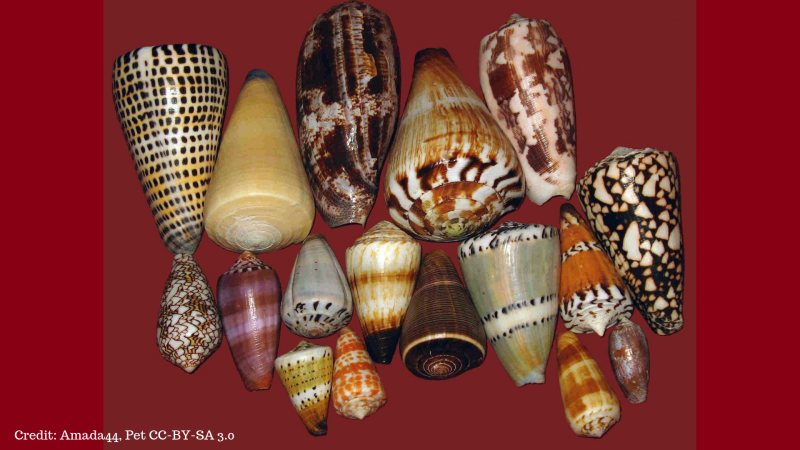
Hiding in the sandy stretches of the rocky seabed of the Pacific ocean, the cone snail waits patiently for its prey. Its weapon of attack—a modified tooth, shaped like a harpoon, protrudes out of the sand. One wrong decision by an innocent prey to come closer to the 'dart of death', and the cone snail goes lurching at the victim with its tooth, which acts like a gun loaded with venom. It stings the prey and paralyses it instantly. The snail then retracts the harpoon, pulling the victim into its mouth and then swallows it happily.
There is a bulb of venom located beneath the dart-like tooth. The secretions of poison from this sac keeps the tooth loaded with toxins, called conotoxins. They are a cocktail of chemically different toxins—small peptides made up of tiny strings of amino acids.
There are about 700 different types of cone snail species that inhabit the warm tropical waters of the ocean. They are mostly found in the Indian and Pacific oceans, the Caribbean and Red seas, and along the coast of Florida. Most cone snails are nocturnal hunters preying on small fishes, marine worms and other snails. Each species has a specific prey, and its venom has evolved to knock out that prey exclusively, taking its life in less than a minute.
The conotoxins act by affecting the nervous system of the prey and preventing the nerve impulses from travelling from one nerve to another, thus paralysing it. There have been reports of people dying of cone snail stings, primarily while collecting their beautiful shells. The most lethal effect of these toxins in humans is muscle paralysis.
A bite by certain species of cone snails like Conus geographus, Conus catus, Conus aulicus, Conus gloriamaris, Conus omaria, Conus magus, Conus striatus, Conus tulipa, and Conus textile are poisonous to us with Conus geographus being the most lethal. Symptoms of exposure include unconsciousness, double vision, blurred vision, weakness, nausea, generalised numbness, speech difficulties and difficulty in swallowing. If left untreated, it could lead to death in one to five hours.
Treating snail bites with antidotes is not easy as there is no single antidote available to act against its venom. It is because most venomous animals like snakes and arthropods only produce one or a few poisons, but a single cone snail produces over 100 individual toxins, making it difficult to create an antidote that targets all the types of toxins produced.
The snail venoms are very specific in their action as they act on only a particular class of receptors. Hence, they are very appealing to the drug industry as it gives them the opportunity to isolate the chemical compound from conotoxins and use them as pain-relievers with no side effects. Ziconotide, a pain reliever isolated from the venom of the magician cone snail, Conus magus is 1,000 times as powerful as morphine.
So, be careful the next time you go deep sea diving. There might be a harmless looking cone snail lurking in the shadows of the sea, waiting to kill!





